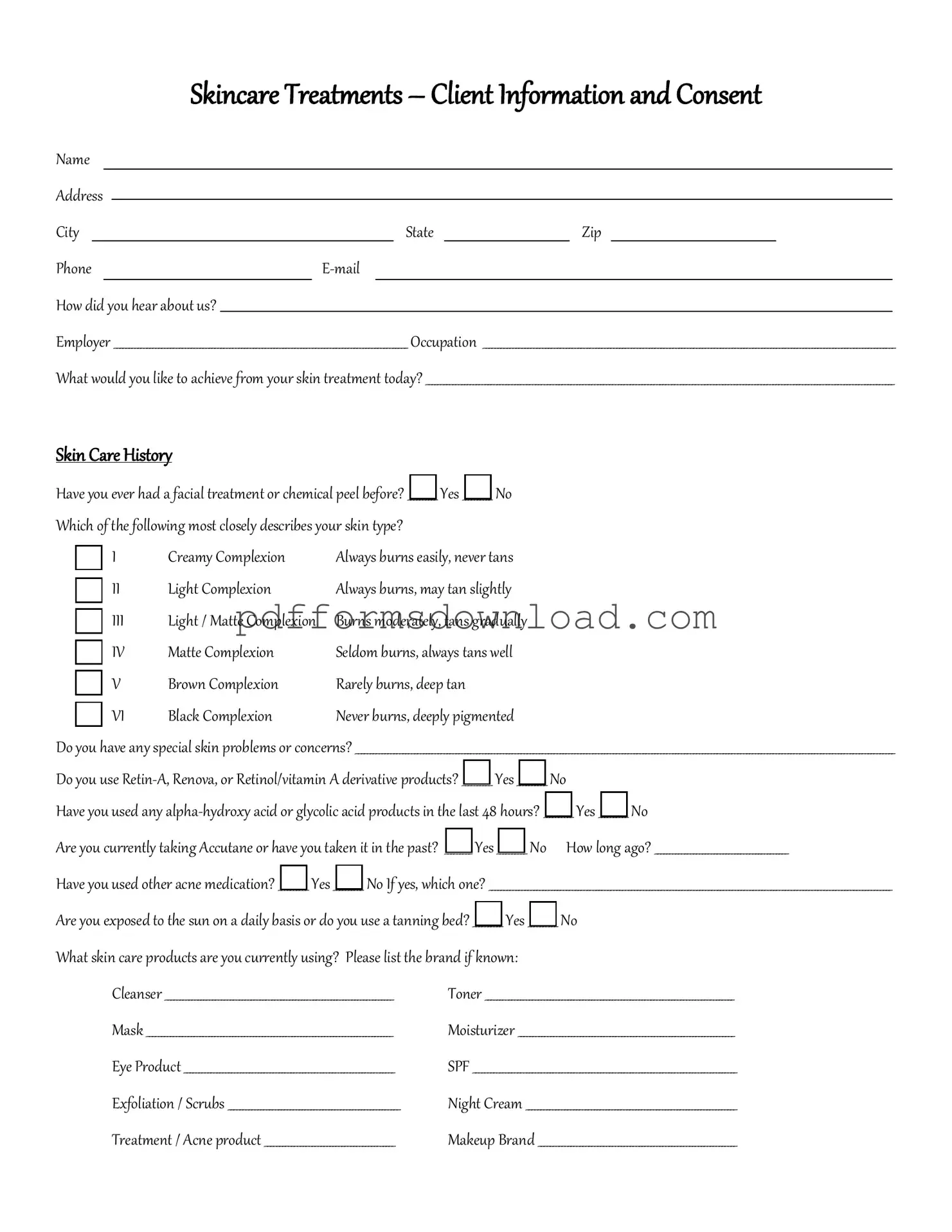What is a Facial Consent form?
A Facial Consent form is a document that ensures you understand the procedures, benefits, and potential risks associated with facial treatments. By signing this form, you acknowledge that you have received all necessary information regarding the treatment you are about to undergo.
Why do I need to sign a Facial Consent form?
Signing the form protects both you and the practitioner. It confirms that you have been informed about the treatment and agree to proceed. This helps to prevent misunderstandings and ensures that you are fully aware of what to expect.
What information will I find on the Facial Consent form?
The form typically includes details about the treatment process, expected outcomes, potential side effects, and any contraindications. It may also ask about your medical history and any allergies to ensure your safety during the procedure.
Can I ask questions before signing the form?
Absolutely. It is important that you feel comfortable and informed. You should ask any questions you may have about the treatment, risks, and aftercare. A qualified practitioner will be happy to provide clarification and address your concerns.
What happens if I don't sign the Facial Consent form?
If you choose not to sign the form, you will not be able to proceed with the treatment. Consent is a crucial part of the process, and without it, practitioners cannot legally perform the procedure.
Is my personal information kept confidential?
Yes, your personal information is protected. Practitioners are required to maintain confidentiality and handle your data in accordance with privacy laws. This includes any information provided in the consent form.
Can I withdraw my consent after signing the form?
You have the right to withdraw your consent at any time, even after signing the form. If you feel uncomfortable or change your mind, communicate your decision to the practitioner immediately.
What if I have a medical condition?
If you have a medical condition, it is essential to disclose this information on the consent form. This will help the practitioner assess whether the treatment is suitable for you and make any necessary adjustments to ensure your safety.
How long is the Facial Consent form valid?
The validity of the form can vary depending on the policy of the practice. Typically, it remains valid for the duration of the treatment series or until there is a significant change in your health status. Always check with the practitioner for specific guidelines.
